It’s been years since I got around to writing this report. Tiruvannamalai: Arunachaleswarar. Even pronouncing it right is a challenge for a European. Some cities enter through your nostrils. Tiruvannamalai gets in through your lungs.
At three in the morning, a horn woke me up. Not a trumpet. A horn. A tone like a hellish saxophone born in the belly of Lord Ganesha during a migraine. Maybe it came from the temple. And that was just the beginning.
In Tiruvannamalai, everyone honks. Cars, rickshaws, cows, temple horns, kids. As if each of them is demanding something from the universe. And the universe replies—usually with dust, heat, and someone trying to sell you a mango before you even realize you’re no longer in Europe.
The Arunachaleswarar Temple
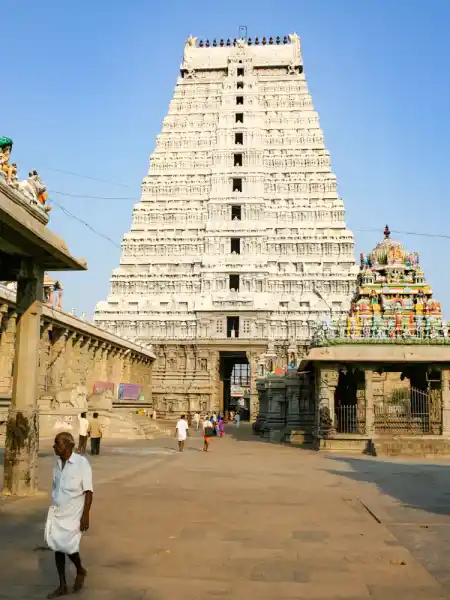
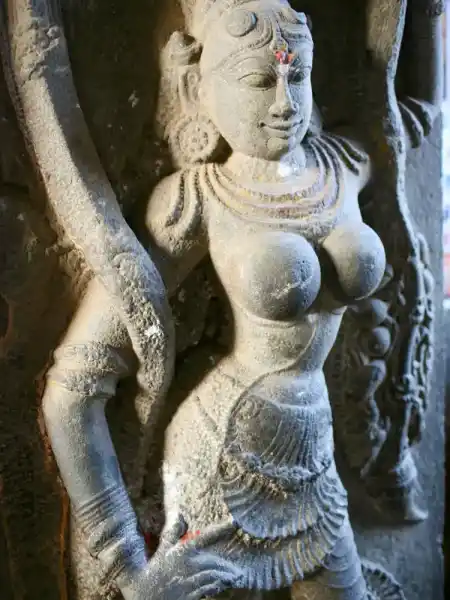
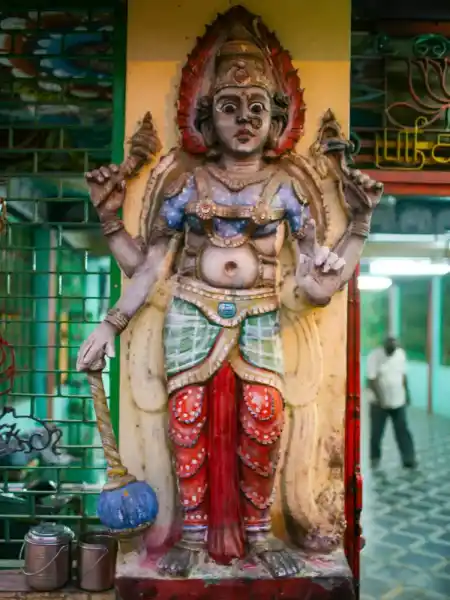
Tiruvannamalai: Arunachaleswarar. A stone colossus of a temple, parked here like a cosmic spaceship. Towering gopurams—those massive, sculpture-covered towers—look like a Hindu version of Marvel’s multiverse. Tomorrow I’ll look down on them from above. Over a thousand statues, each from a different universe. Each telling you something. None of them in your language.
Tiruvannamalai is to Hindus what the Vatican is to Christians. Only this spiritual city is more colorful and wild. Pilgrims soak their feet in the temple pools. Personally, I wouldn’t dip a toe in that water.
The elephant priest


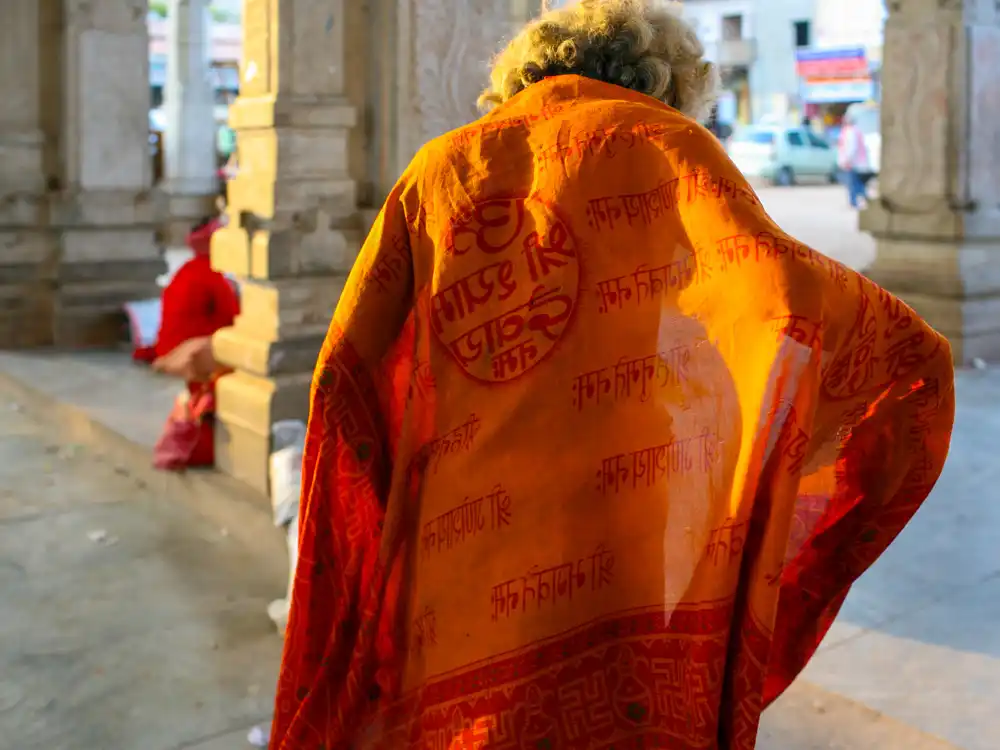

Suddenly, an elephant appears. Dressed up like a Christmas tree, a white spiral painted on its forehead, eyes full of resignation. It blesses your forehead with its trunk. I toss it a coin. The elephant nods. I don’t know if it’s divine gratitude or just toothache. Either way, their elephant marketing is on point.
I walk through sanctuaries, surrounded by idols I honestly don’t understand. Many pilgrims chant in meditation, something like “ohm…” Still, it’s something you have to experience. India changes you.
Mornings begin with a banana leaf
We stayed at the Ramana Maharshi Ashram. Even the name sounds like a code: say it out loud and you might lose your passport. My companion, a spiritually inclined European, praised the place. They gave us free accommodation and meals. No wonder, since he had donated a generous sum—several times more than a room at the Hilton. I was grateful.
Our mornings began with saffron-colored chanting and spilled tea. Food was served on the floor, on banana leaves. On the first day, I thought the leaf was a salad and started chewing on it. They explained it was the plate. I smiled like an idiot who just discovered the difference between cutlery and a bonsai tree.
Breakfast at Ramana Maharshi Ashram
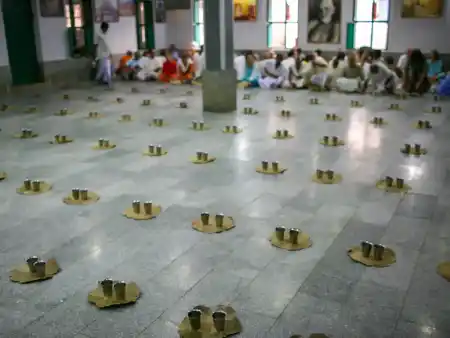
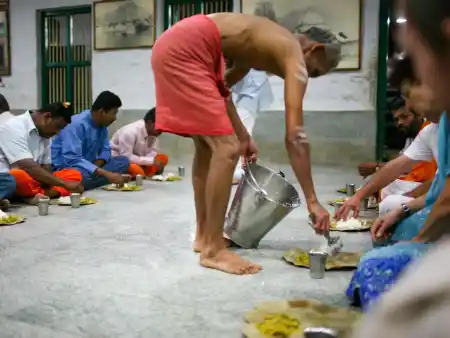
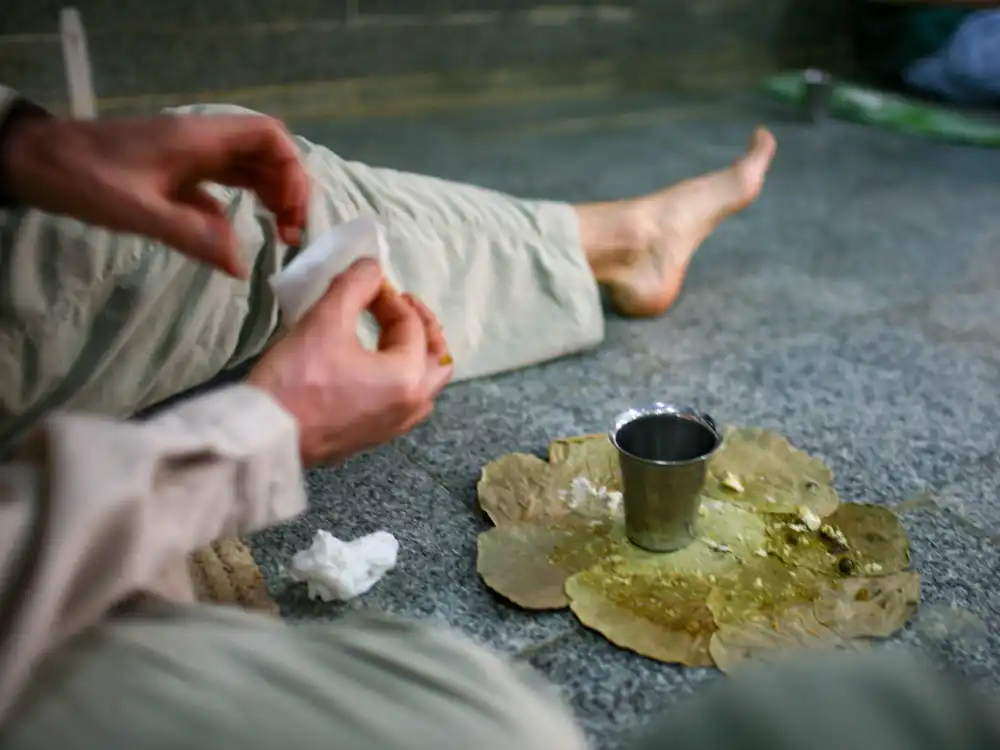
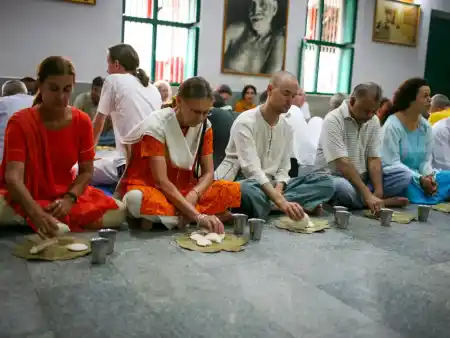
You eat with your hands. Everything. Curry, rice, dal, some kind of sauce pretending to be dessert but tasting like a damp, overly sweet turban. Why always with the right hand? You’ll find out soon enough. After a day or two, your hand becomes your utensil. You start believing that Western civilization is decadent simply because it uses forks.
Ramana Maharshi Ashram
Meditation in Ramana Maharshi’s ashram, meditation doesn’t happen—it simply happens to you. Without instruction, without the lotus pose, without an app. You sit in the hall, and instead of candles or incense, you’re surrounded by raw, dense silence. It’s not the kind of soothing silence you play on Spotify. This silence has weight. And in it, you can’t hide from yourself.
Old men in white dhotis sit motionless for hours, young yogis occasionally twist into an asana, but everyone shares the same space. Some walk slowly around the prayer room. Ramana would smile—effortless, goalless meditation that’s addictive like black coffee without sugar.
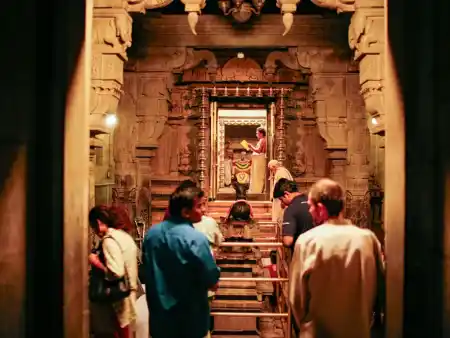
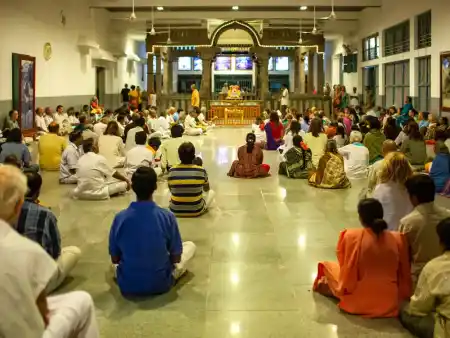


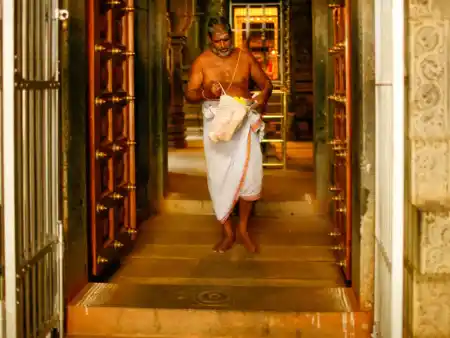
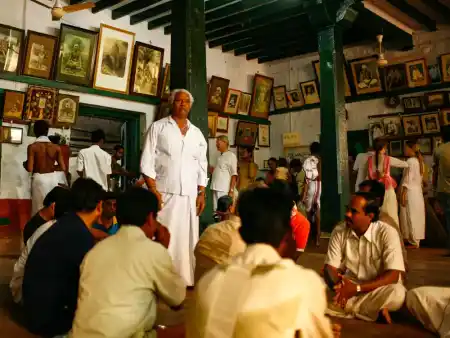
And then you realize: this is enough. You don’t have to try to be spiritual—just sit. Or don’t. But above all, don’t lie to yourself. In this space, lies have nowhere to run.
The meditation hall is open daily from early morning till late evening. Entry is free. No checks, no glossy flyers promising enlightenment. Just sit down.
The quietest spot is the hall with Ramana’s samadhi—a modest stone shrine where old men, women in saris, and a few lost Europeans sit together in silence. Occasionally someone crosses themselves or nods at a thought. You can stay an hour—or just a few minutes. No one will ask you to leave.
There’s a small bookstore, a dining area (three simple but tasty vegetarian meals are served daily for free), and a library. Vedic chanting (Veda Parayanam) happens each morning and evening, mostly in Tamil or Sanskrit. Join in—or don’t.
Everything is voluntary. But nothing is tourist-friendly. No brochures. No guided meditations. Just a spiritual rhythm without Wi-Fi, and the ability to be alone with yourself, which might ambush you with your own thoughts.
Holy wells and microbial concerts
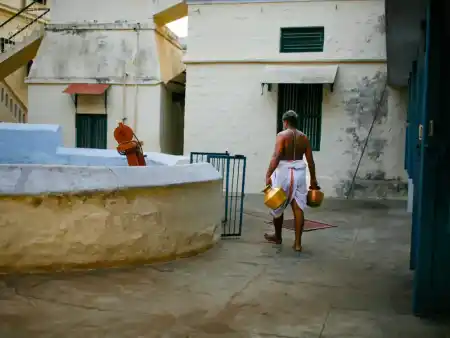

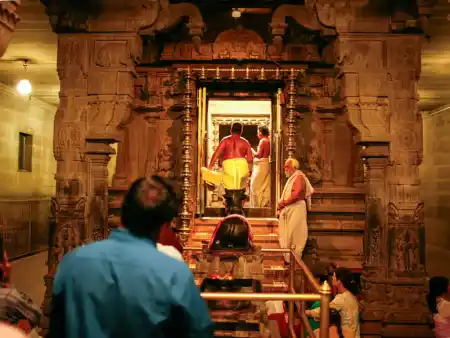



Never drink water in India unless it’s from a sealed bottle. It’ll save you hours on the toilet. One day I was offered water from a supposedly sacred well. It had a greenish-brown magical glow. It looked mythical. Every creature nearby drank from it. But considering the state of local water tanks and the devotees’ fondness for washing feet and laundry wherever possible, I chickened out. Thank you, Brahma, for giving me the strength to resist.
That moment with the well was more spiritual than any chanting or walking meditations in the hall. Realizing that something sacred can also be a biological threat? Now that’s enlightenment.
Yogi Ram Surath Kumar Ashram
Entering the Yogi Ram Surath Kumar Ashram felt like stepping into a sanctuary for introverts. Not a soul in sight. Just silence, a massive sterile space, and a sea of quote-covered plaques shouting wisdom at me. Every wall, bench, and pillar bore some spiritual message—as if someone was terrified I might leave without a life lesson.
The hall, big enough for several gymnasiums, hinted that crowds once gathered here. But today it was perfectly empty, except for one thing: a mechanical electric drum (likely for summoning the faithful). It looked like a project by someone with too much free time and even more faith in technology. I pressed a button and a mini-ritual began: motor, lever, hammer… and finally, the drum sounded. Ten glorious seconds in which I reconsidered my sins, my direction in life, and why I’m so fascinated by poetic absurdity.



Yogi Ram was probably a saint who loved solitude and had a knack for order. Even without people, the place was spotless, and everything worked.
And maybe that’s why the mechanical drum felt so sincere. Like the whole ashram—peaceful, bizarre, and nearly perfectly forgotten.
Between gods and garbage
The Tiruvannamalai: Arunachaleswarar temple complex is beautiful, clean, orderly. Its surroundings? Not so much. It’s like the gods stopped caring, and people took it as a sign. Or maybe holiness doesn’t cancel chaos—it just paints it golden.
I take a few barefoot steps like the locals. A few paces in, I step on a seashell. One more, and I’ve got a plastic masala cup stuck to my foot. Then I find a pond full of trash, moldy cloth and murky water. Never drink in India from anything that’s not sealed. You’ll save hours on the toilet.




Outside, there’s a long queue. A French woman is handing out rice to beggars and travelers. Guilt offerings for a comfy life in Europe, maybe? The air is thick with incense, exhaust, burnt rice husks and sweat. Spirituality is sweaty. And yet—something about this ashram holds you together, even if you’re skeptical, even if you’re cynical.
It is surrender and peace of mind. Everywhere.





